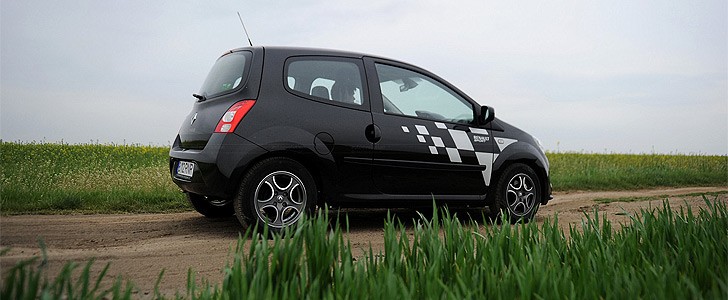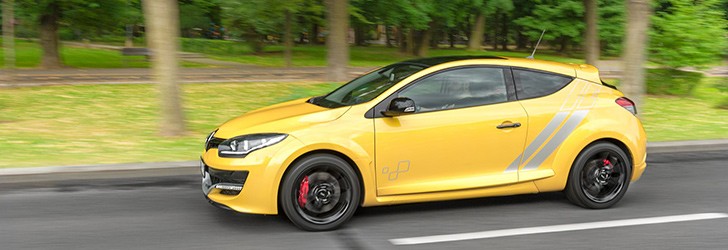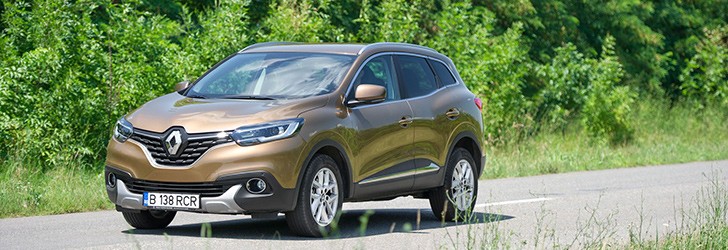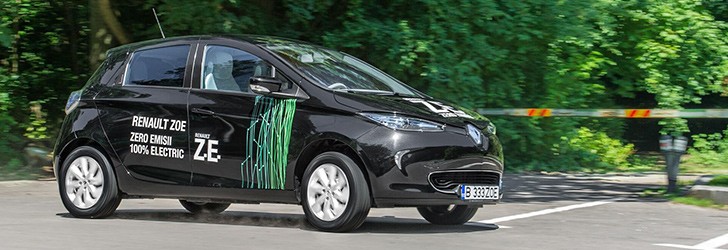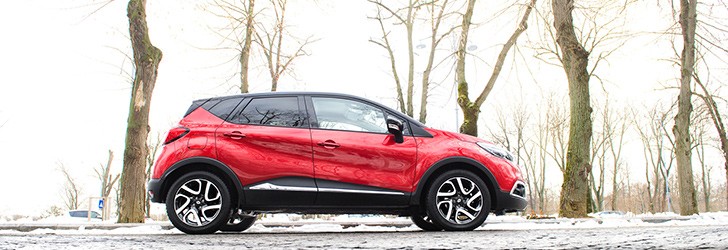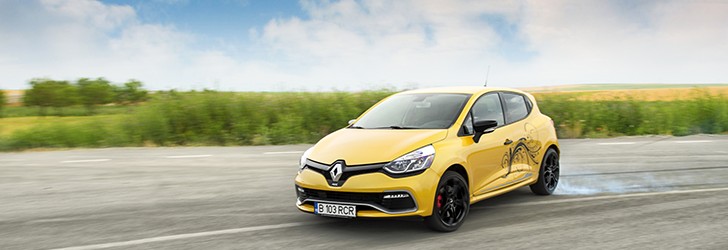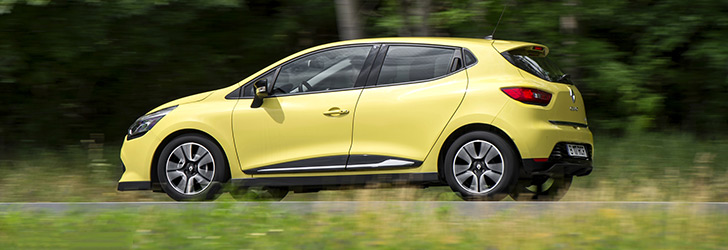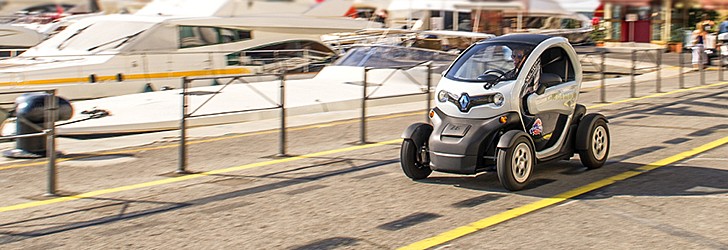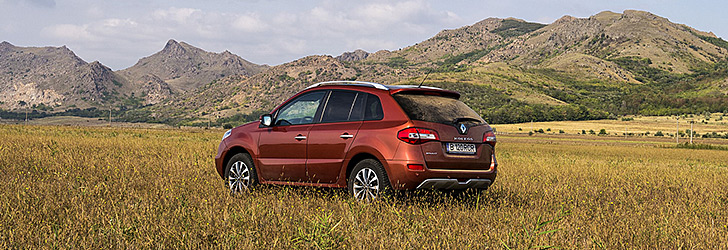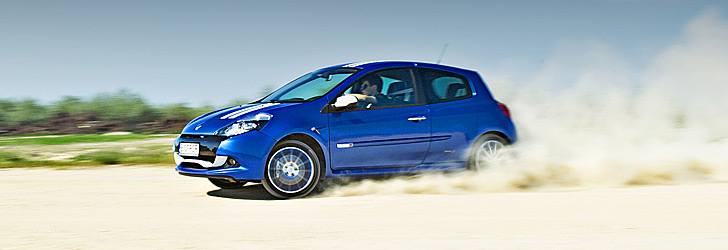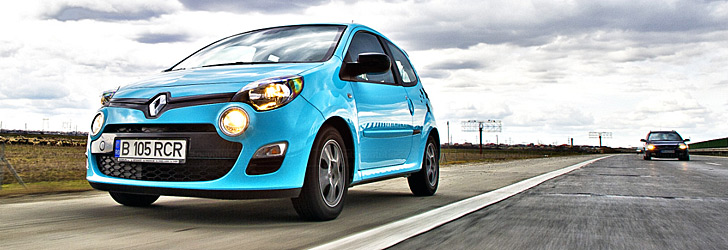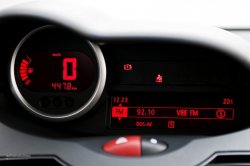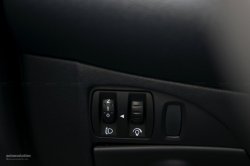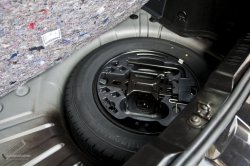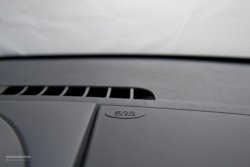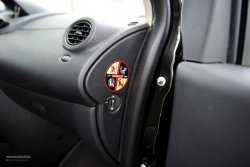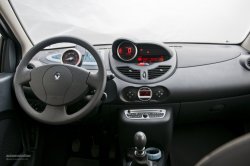RENAULT Twingo Review
OUR TEST CAR: RENAULT Twingo 1.2 16V
Back in the early 90s’, Renault got smart with words, explaining that the riskiest thing to do is to take no risks. Translated into business language, this meant that the company wanted to experiment with its design. And so it did and thus the Twingo was born.
Imagine it - Paris, the city of love, autumn, a perfect time for chic accessories: the public at the Paris Auto Show was ready to meet the new revolutionnaire, the veil came of... and the little thing started smiling at everyone.
The Twingo was not meant to become anyone’s cherry, the car used other pathways to conquer customers. It came with compact dimensions that made it perfectly suitable for the crowded (can you believe it? they dared to call the 90’s traffic crowded) urban areas and was sprinkled with originality inside and out. Want an example? The dashboard used a digital display that was placed on the center, not in front of the driver.
Actually, the first Twingo’s design story is a pretty controversial one, but not because of the reasons you’d expect. You see, the shape of the car was borrowed from another vehicle, which had came to the world over a decade earlier as a prototype built by Bosmal, a Polish company which apparently lacked the funding to hold on to its patent, with the French taking a peek at the Beskid (this is how it was called) before hitting the drawing board.
The Twingo became a successful vehicle, managing to register hefty sales, with its presence spreading way beyond the French borders.
Then, at the 2006 edition of the aforementioned auto show, Renault introduced the Twingo Concept, visually pleasing the crowd with a young and sporty look (yes, our test car learned the checkered-flag-on-the-sides trick from the concept).
The following year, Clio the Second came to the world, with Renault bragging that the vehicle had maintained all the assets of the first generation, while adding an aura of dynamic abilities.
Is that true or is it just another association of words with the sole purpose of making the financial reports look good? We’ll answer this question in the following chapters, as we got to play with the 1.2-liter 75 hp version of the Twingo.
Before we start we have to explain the "sapphic" in the test drive's intro. We don't know exactly how may words a video is worth, but we're guessing it's a pretty high value. so here's how Renault advertises the Twingo:
Ask your partner, your friends, even your cat about the Twingo’s appearance and you’ll see a few negative emotions show up. So, the world thinks the Twingo is ugly. Well, we don’t agree. At least not entirely.
The lines of the vehicle’s front end really managed to push a few buttons in our heads. The front fascia seems to have been inspired from the lines of a medieval metal armor. Thus, every time we look the Twingo in its headlight, we thing about a knight looking through its visor before a battle.
We also liked the design of the door handles (your fingers will pay a high price for this, but we won’t talk about this in the current chapter) and the fact that the designers’ pledge for originality can be seen all around the vehicle. Come with us a little closer, let’s take a look from the side. See that winding line of the rear hatch? This is one of the reasons for which we appreciate the thing.
The vehicle we tested was a little deceiver, as it waved a set of racing decals that included Renault Sport inscriptions on its sides. Go 75 hp, go! The same goes for its rims. Yes, it did use a set of clean-style lightweight alloys, but the 65 part in its 175/65 R14 tires was anything but sporty. You don’t have to be a car guy to know that the high sidewalls will be your enemies through the corners, you can tell that just by looking at the car.
However, the rear end of the vehicle is nothing short of boring. The bumper is an element that protects the car in case of a low speed impact, the taillights allow others to see that you exist and announce your driving intentions and the hatch keeps the luggage from falling out of the car and the wind from coming in. That’s all. Not one extra synapse was used by the designers.
Even though it’s a small car, the Twingo doesn’t look adorable. Most people call it ugly, but we really like the originality of its front fascia (no, not Lady Gaga original but good original) - We’ll call this its aerodynamic armor. We also enjoy the fact that it doesn’t come with a tall silhouette that would’ve ruined any effort made by the designers.
You can’t just enter the Twingo. First, you have to operate the door handle, a process that screams “form DOES NOT follow function!”. This is nothing new for owners of the previous generation, from which the system is borrowed, but if you’re not familiar with the car, or just in a hurry, it just stands in your way.
Once you’re inside the car, it all gets better, as the innovational layout of the dashboard brings a happy mood. And it’s not just the fact that it’s original, the designers have managed to create an atmosphere of youth inside the vehicle. The digital speedometer placed on the center of the dash works together with the rev counter, which is mounted on top of the steering column, to make you want to start a party.
In the spot where an usual car keeps its instrument panel, Renault has mounted a funny-looking open air storage compartment that uses rubber stalagmites to keep your stuff in place. For a more interesting description of this, you can check out Sir May B. Bach’s opinion.
However, if we want to move past the dashboard, we’ll have to watch the dynamics of our bodies, as the interior space is a bit below what we expected. The fact that the car belongs to the A segment means that the driver and the front passenger will become more intimate that they may have wished.
Like we said in the Open Road chapter, the rear seats offer a relatively decent amount of space, but the experience of riding in the back does become tiring after a few hundred kilometers.
As far as the luggage is concerned, the Twingo is a smart car: you can turn any of the independent rear seats into a table, as well as fold them to expand the luggage space to astronomic areas. Unfortunately, folding the rear seats can be a hazardous experience, as the system can literally cut your fingers off, if you’re not paying attention.
Renault was really keen to cut costs when it created the Twingo and you can feel this when touching some of the interior plastics, including the material used for the steering wheel.
All in all, the Twingo’s cabin is a decent environment for short- and medium-distance trips. The scales are tipped on the one hand by the original, youthful layout and the modularity, and, in the opposite direction, by the cheap plastics and poor soundproofing.
Finally, we got our hands on a car that weighs under a ton. Now we only need to double the engine’s output and mount it behind the front seats...
We have to tell you that we’re disturbed by the way in which history turned this four-wheeled things we called automobiles into structures that seem to be made of stone. Yes, we know that the weight comes due to safety and interior space reasons, but we just can’t help by being annoyed by this.
Anyway, back to the Twingo. The vehicle’s sub-tonic mass can really be felt inside the city, offering the car surprising agility. We didn’t have our testing facility with us, so the way in which this translated into autoevolution language was “fun to drive”. However, if you want to be decent from the dynamic point of view (this is the best you’ll get out of this powerplant), you’ll have to push the 1.2-liter engine hard, shifting gears over 5,000 rpm, which could make you look like a mad man to your passengers.
The generous glass area makes a great couple with the slim pillars. Actually, the two have a child, who is called “good all-round visibility”. This allows you to take advantage of the car’s willingness to change direction.
The electrically-assisted rack and pinion steering is ready to take the car anywhere you like, unlike the suspension, which might beg to differ through its comfort-orientated setup. Fortunately, the vehicle’s lightness means that you can abuse the steering wheel without being punished. In fact, this is what we expected from the car. After all, its name is a linguistic cocktail that uses the “Twist”, “Swing” and “Tango” ingredients.
Inside the city, the suspension offers a good compromise between pothole protection and lateral G assistance, so your experience won’t be ruined when you come across road flaws. The seats offer no lateral support whatsoever, but they’re large and cozy enough to make you feel comfortable.
Parking is obviously dealt effortlessly, so this car manages to keep the smile on your face at all times. This is also partially true for when it’s time to hit the gas station. During the urban time of our test, we witnessed a fuel consumption of around 8.5 liters per 100 km (27.5 US mpg).
A naturally-aspirated 1.2-liter engine doesn’t quite make you want to want to take its bearer and hit the open road, so we started our trip outside the city with the face our cat makes when we take it to the shower.
However, our facial expression rapidly made a step (remember, we said one, not multiple steps) towards that shown by our dog when taken to the shower. We’re not saying that the Twingo will reward you for taking it on trips on the open road, but it won’t punish you either.
Having already gotten used the the idea that we have to change gears above 5,000 rpm, we managed to get down the road in a decent way. Not even the overtaking maneuvers proved to be an issue. Of course, you do have to pay for the engine’s lack of grunt, with the only accepted currency being “planning ahead”. As long as you do that, you’ll be able to bore others with the rear of the Twingo. However, we really wished we had tested the version that used a small turbine for the 1,149 cc under the hood.
The suspension manages to deal with B roads just fine, with a very little amount of the vertical movement being transmitted to the body of the vehicle. Going one step further to the... human body, we’ll tell you the soft seats allow you to feel comfortable during longer trips.
Just don’t try to enter a corner too hard, as both the aforementioned elements will make that an unpleasant experience. Another flaw of the vehicle comes from its soundproofing. The current generation of the Twingo doesn’t offer a gigantic cloth sunroof like its predecessor, but, from the audio point of view (please excuse the written synesthesia) it feels like it does. The wind noise invades the cabin once you exceed 80 km/h (50 mph), with the back seat area being the most affected.
Speaking of the rear seats, we have to mention that this offer proper accommodation, as long as the trip’s length doesn’t exceed a certain value, which is situated around 500 km (310 miles). And if the passengers want to stretch their legs, they’ll have to asks for a stop, as the vehicle itself doesn’t need to do this very often, returning a highway fuel efficiency of around 6.5 liters per 100 km (36 mpg).
Imagine it - Paris, the city of love, autumn, a perfect time for chic accessories: the public at the Paris Auto Show was ready to meet the new revolutionnaire, the veil came of... and the little thing started smiling at everyone.
The Twingo was not meant to become anyone’s cherry, the car used other pathways to conquer customers. It came with compact dimensions that made it perfectly suitable for the crowded (can you believe it? they dared to call the 90’s traffic crowded) urban areas and was sprinkled with originality inside and out. Want an example? The dashboard used a digital display that was placed on the center, not in front of the driver.
Actually, the first Twingo’s design story is a pretty controversial one, but not because of the reasons you’d expect. You see, the shape of the car was borrowed from another vehicle, which had came to the world over a decade earlier as a prototype built by Bosmal, a Polish company which apparently lacked the funding to hold on to its patent, with the French taking a peek at the Beskid (this is how it was called) before hitting the drawing board.
The Twingo became a successful vehicle, managing to register hefty sales, with its presence spreading way beyond the French borders.
Then, at the 2006 edition of the aforementioned auto show, Renault introduced the Twingo Concept, visually pleasing the crowd with a young and sporty look (yes, our test car learned the checkered-flag-on-the-sides trick from the concept).
The following year, Clio the Second came to the world, with Renault bragging that the vehicle had maintained all the assets of the first generation, while adding an aura of dynamic abilities.
Is that true or is it just another association of words with the sole purpose of making the financial reports look good? We’ll answer this question in the following chapters, as we got to play with the 1.2-liter 75 hp version of the Twingo.
Before we start we have to explain the "sapphic" in the test drive's intro. We don't know exactly how may words a video is worth, but we're guessing it's a pretty high value. so here's how Renault advertises the Twingo:
Ask your partner, your friends, even your cat about the Twingo’s appearance and you’ll see a few negative emotions show up. So, the world thinks the Twingo is ugly. Well, we don’t agree. At least not entirely.
The lines of the vehicle’s front end really managed to push a few buttons in our heads. The front fascia seems to have been inspired from the lines of a medieval metal armor. Thus, every time we look the Twingo in its headlight, we thing about a knight looking through its visor before a battle.
We also liked the design of the door handles (your fingers will pay a high price for this, but we won’t talk about this in the current chapter) and the fact that the designers’ pledge for originality can be seen all around the vehicle. Come with us a little closer, let’s take a look from the side. See that winding line of the rear hatch? This is one of the reasons for which we appreciate the thing.
The vehicle we tested was a little deceiver, as it waved a set of racing decals that included Renault Sport inscriptions on its sides. Go 75 hp, go! The same goes for its rims. Yes, it did use a set of clean-style lightweight alloys, but the 65 part in its 175/65 R14 tires was anything but sporty. You don’t have to be a car guy to know that the high sidewalls will be your enemies through the corners, you can tell that just by looking at the car.
However, the rear end of the vehicle is nothing short of boring. The bumper is an element that protects the car in case of a low speed impact, the taillights allow others to see that you exist and announce your driving intentions and the hatch keeps the luggage from falling out of the car and the wind from coming in. That’s all. Not one extra synapse was used by the designers.
Even though it’s a small car, the Twingo doesn’t look adorable. Most people call it ugly, but we really like the originality of its front fascia (no, not Lady Gaga original but good original) - We’ll call this its aerodynamic armor. We also enjoy the fact that it doesn’t come with a tall silhouette that would’ve ruined any effort made by the designers.
You can’t just enter the Twingo. First, you have to operate the door handle, a process that screams “form DOES NOT follow function!”. This is nothing new for owners of the previous generation, from which the system is borrowed, but if you’re not familiar with the car, or just in a hurry, it just stands in your way.
Once you’re inside the car, it all gets better, as the innovational layout of the dashboard brings a happy mood. And it’s not just the fact that it’s original, the designers have managed to create an atmosphere of youth inside the vehicle. The digital speedometer placed on the center of the dash works together with the rev counter, which is mounted on top of the steering column, to make you want to start a party.
In the spot where an usual car keeps its instrument panel, Renault has mounted a funny-looking open air storage compartment that uses rubber stalagmites to keep your stuff in place. For a more interesting description of this, you can check out Sir May B. Bach’s opinion.
However, if we want to move past the dashboard, we’ll have to watch the dynamics of our bodies, as the interior space is a bit below what we expected. The fact that the car belongs to the A segment means that the driver and the front passenger will become more intimate that they may have wished.
Like we said in the Open Road chapter, the rear seats offer a relatively decent amount of space, but the experience of riding in the back does become tiring after a few hundred kilometers.
As far as the luggage is concerned, the Twingo is a smart car: you can turn any of the independent rear seats into a table, as well as fold them to expand the luggage space to astronomic areas. Unfortunately, folding the rear seats can be a hazardous experience, as the system can literally cut your fingers off, if you’re not paying attention.
Renault was really keen to cut costs when it created the Twingo and you can feel this when touching some of the interior plastics, including the material used for the steering wheel.
All in all, the Twingo’s cabin is a decent environment for short- and medium-distance trips. The scales are tipped on the one hand by the original, youthful layout and the modularity, and, in the opposite direction, by the cheap plastics and poor soundproofing.
Finally, we got our hands on a car that weighs under a ton. Now we only need to double the engine’s output and mount it behind the front seats...
We have to tell you that we’re disturbed by the way in which history turned this four-wheeled things we called automobiles into structures that seem to be made of stone. Yes, we know that the weight comes due to safety and interior space reasons, but we just can’t help by being annoyed by this.
Anyway, back to the Twingo. The vehicle’s sub-tonic mass can really be felt inside the city, offering the car surprising agility. We didn’t have our testing facility with us, so the way in which this translated into autoevolution language was “fun to drive”. However, if you want to be decent from the dynamic point of view (this is the best you’ll get out of this powerplant), you’ll have to push the 1.2-liter engine hard, shifting gears over 5,000 rpm, which could make you look like a mad man to your passengers.
The generous glass area makes a great couple with the slim pillars. Actually, the two have a child, who is called “good all-round visibility”. This allows you to take advantage of the car’s willingness to change direction.
The electrically-assisted rack and pinion steering is ready to take the car anywhere you like, unlike the suspension, which might beg to differ through its comfort-orientated setup. Fortunately, the vehicle’s lightness means that you can abuse the steering wheel without being punished. In fact, this is what we expected from the car. After all, its name is a linguistic cocktail that uses the “Twist”, “Swing” and “Tango” ingredients.
Inside the city, the suspension offers a good compromise between pothole protection and lateral G assistance, so your experience won’t be ruined when you come across road flaws. The seats offer no lateral support whatsoever, but they’re large and cozy enough to make you feel comfortable.
Parking is obviously dealt effortlessly, so this car manages to keep the smile on your face at all times. This is also partially true for when it’s time to hit the gas station. During the urban time of our test, we witnessed a fuel consumption of around 8.5 liters per 100 km (27.5 US mpg).
A naturally-aspirated 1.2-liter engine doesn’t quite make you want to want to take its bearer and hit the open road, so we started our trip outside the city with the face our cat makes when we take it to the shower.
However, our facial expression rapidly made a step (remember, we said one, not multiple steps) towards that shown by our dog when taken to the shower. We’re not saying that the Twingo will reward you for taking it on trips on the open road, but it won’t punish you either.
Having already gotten used the the idea that we have to change gears above 5,000 rpm, we managed to get down the road in a decent way. Not even the overtaking maneuvers proved to be an issue. Of course, you do have to pay for the engine’s lack of grunt, with the only accepted currency being “planning ahead”. As long as you do that, you’ll be able to bore others with the rear of the Twingo. However, we really wished we had tested the version that used a small turbine for the 1,149 cc under the hood.
The suspension manages to deal with B roads just fine, with a very little amount of the vertical movement being transmitted to the body of the vehicle. Going one step further to the... human body, we’ll tell you the soft seats allow you to feel comfortable during longer trips.
Just don’t try to enter a corner too hard, as both the aforementioned elements will make that an unpleasant experience. Another flaw of the vehicle comes from its soundproofing. The current generation of the Twingo doesn’t offer a gigantic cloth sunroof like its predecessor, but, from the audio point of view (please excuse the written synesthesia) it feels like it does. The wind noise invades the cabin once you exceed 80 km/h (50 mph), with the back seat area being the most affected.
Speaking of the rear seats, we have to mention that this offer proper accommodation, as long as the trip’s length doesn’t exceed a certain value, which is situated around 500 km (310 miles). And if the passengers want to stretch their legs, they’ll have to asks for a stop, as the vehicle itself doesn’t need to do this very often, returning a highway fuel efficiency of around 6.5 liters per 100 km (36 mpg).
12
Our RENAULT Testdrives:
Photo gallery (106)
